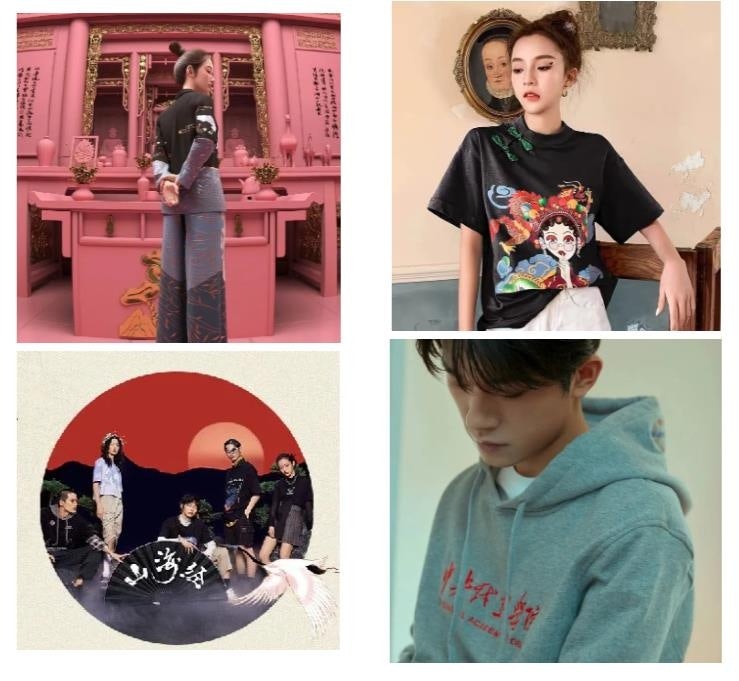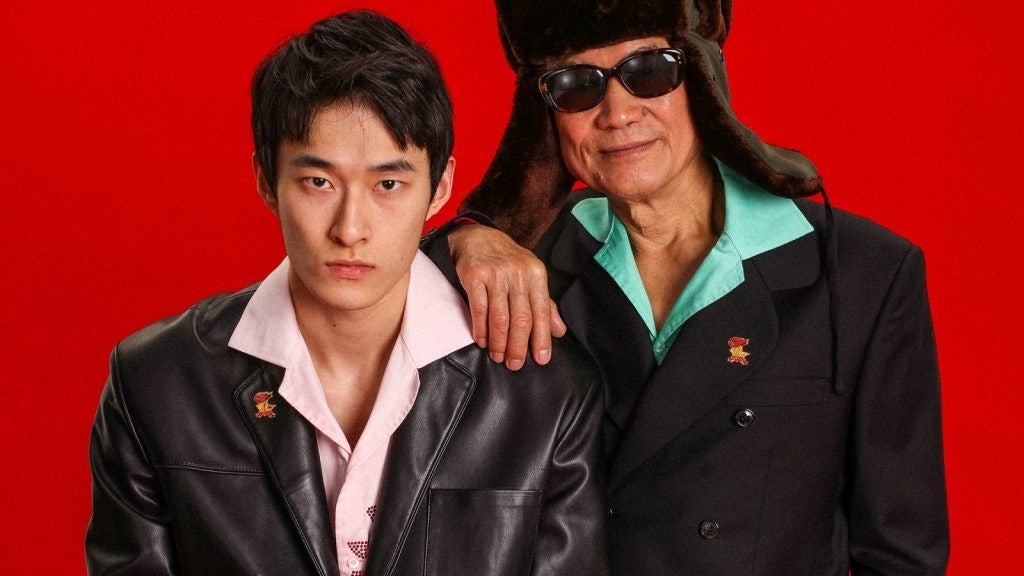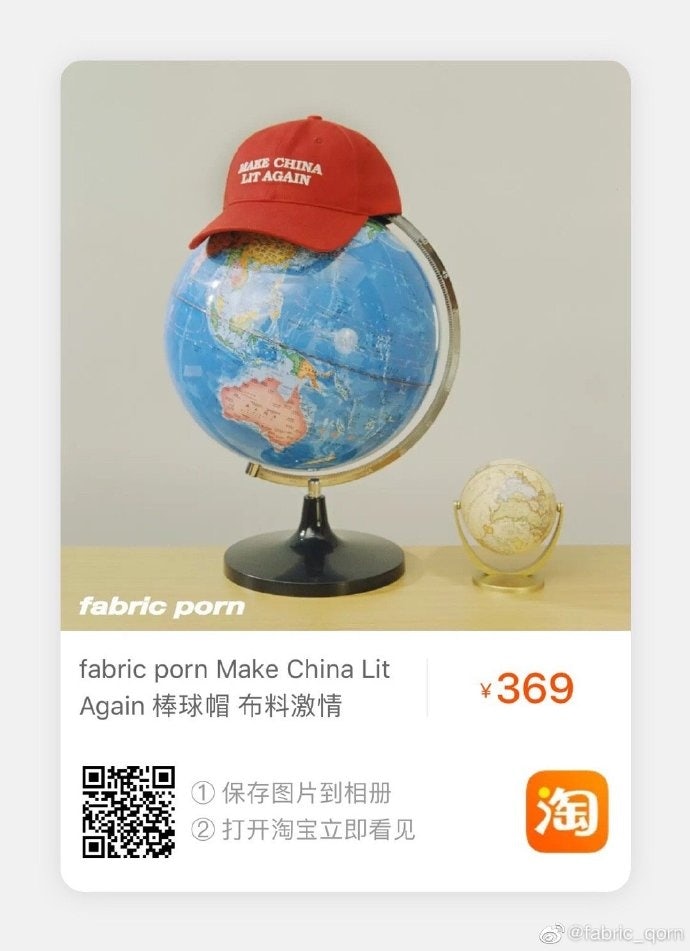If you've been on the Chinese Internet over the last few years, chances are you've come across the term “Guochao.” When the cookie-cutter Chinese sports brand Li Ning debuted a streetwear-infused line of clothing at Paris Fashion Week in 2018, netizens coined the term "Guochao" to describe a rising group of local designers who were making Chinese nationalism trendy. Since then, almost every millennial-savvy brand has rushed to launch Guochao-inspired collabs in support of Chinese culture. But as repetitive China-proud narratives continue to flood the market, consumer fatigue has followed. Now, to obtain serious cultural reach, Chinese designers must go beyond a basic “proudly made in China” concept.
Guochao is linked to the concept of “cultural confidence (文化自信),” which is another buzzword in China that refers to the country's rising cultural self-esteem. Meanwhile, domestic e-commerce giants like Alibaba, JD.com, and NetEase have quickly produced Guochao shopping festivals to attract younger consumers. Alibaba's premium branch, Tmall, has even introduced a Guochao incubation center to help support homegrown fashion brands through a related algorithm and other measures.
As a type of “soft power” that encourages young people to take pride in their national identity, the Chinese government has approved of the Guochao movement. In a propaganda video, the state-owned CCTV channel described Guochao by saying that brands are “exporting China's culture and aesthetic, which is bound to make a lasting difference.” As such, producing Guochao pieces or anything that puts forth a China-proud narrative has become both commercially viable and politically correct.
Xiaojing Huang, a Chinese trend expert and founder of design consultancy Yang Design, said this brand of nationalistic sentiment is likely to prevail over the coming decades. “China has been in a strong nationalist mood since the 2008 Beijing Olympics,” she said, “and this ideology is likely to prevail for the next 30 years as China's economy grows slowly but steadily.” She also emphasized that the Guochao craze is particularly relevant to the post-90s generation, which was raised during a period of heightened nationalism. Because of this, few of those younger consumers equate “Made in China” with cheap knock offs as their parents do.
But as Guochao grows into a mainstream cultural staple, more discerning millennials have started to call out brands that utilize it superficially and have demanded action rather than empty patriotism. Across social media, videos mocking Guochao have been trending. Consider vlogger @杨子江 made a video lamenting the conventional ways brands now make Guochao collections by either copying traditional Japanese motifs dubbed into Chinese or printing a motivational slogan onto a bland T-shirt. Guochao has also been put on blast for its constant plagiarism, and some of the most renowned local brands like Warrior have repeatedly been accused of copying international designers. Now many millennials see Guochao as a rip off of global streetwear trends that also capitalizes on patriotic sentiment.
While Guochao began as a cultural movement, these days, brands mostly create designs with an algorithm rather than a creative approach. Thanks to how-to Guochao guides, AI services often play a big part in designing today’s Guochao sales hits by compiling trending Chinese motifs like cranes and ceramics via consumer data. And as national pride starts turning into China's favorite theme, Guochao has become shorthand for political correctness and positive progress. But to elicit real cultural respect inside China, more must be done.

Most Guochao brands present traditional patriotic symbols in a performative way. But Chen Xi, the founder of Fabric Porn, has instead gone against the grain by finding inspiration in China's contemporary grassroots class. “I see a gap in Chinese fashion that people often overlook,” said Chen. “The beauty in our society's grassroots class.” With a sharp-edged and modern silhouette, the brand's clothing line is often emblazoned with China’s forgotten everyday symbols like ads for fake IDs (commonly found in dark urban alleyways) and imagery from 90s children's books. Although Chinese officials might view these symbols as stains on the image of a powerful, modern China, Chen turns them into a refreshing and thoughtful aesthetic.

Perhaps one of Fabric Porn's most representative designs is a hat that says Make China Lit Again, modeled after President Trump's original “MAGA” hat. But Chen said that irony wasn’t his intention. “It's an honest declaration that young China wants to be open to foreigners and wants their country to be better,” he told Jing Daily.

In thinking about alternative visuals to represent contemporary China, designer Song Ta is looking to social satire. His brand's Spring/Summer 2020 collection features exaggerated high-waisted, baggy pants meant to mimic the iconic style of former state leader Jiang Zemin. The brand even coined the term “Kanbu style,” which means “leaders' style,” to refer to the way Chinese boomer politicians typically dress. “The younger generation now has a de-Westernized understanding of fashion and trends,” said Song Ta. “They feel more comfortable to stray from the mainstream and present a sense of otherness.”

Confronting the limits of mainstream Guochao style has forced designers like Chen Xi and Song Ta to rethink how they approach clothes in a time of surging nationalism. “The fact that Guochao is trending means that the level of cultural confidence is escalating,” said Chen Xi, “but I personally think it lacks depth.” Similarly, Song Ta has called for a calmer take on the Guochao fad. “It feels like we have reached a peaking point, and it’s time to go back to issues that are more design-centric,” he said.
The future of Guochao, or any fashion trend native to China, will be tied to the fundamental question of cultural power. Today, mainstream Guochao presents itself as a pseudo-culture rather than a movement driven by the genuine curiosity of China’s cultural heritage — and that won't hold the interest of young Chinese consumers. For local brands, creating styles that make Chinese feel lit again isn’t any easier than it was in the past, even though “Made in China” no longer holds the stigma it once did.
